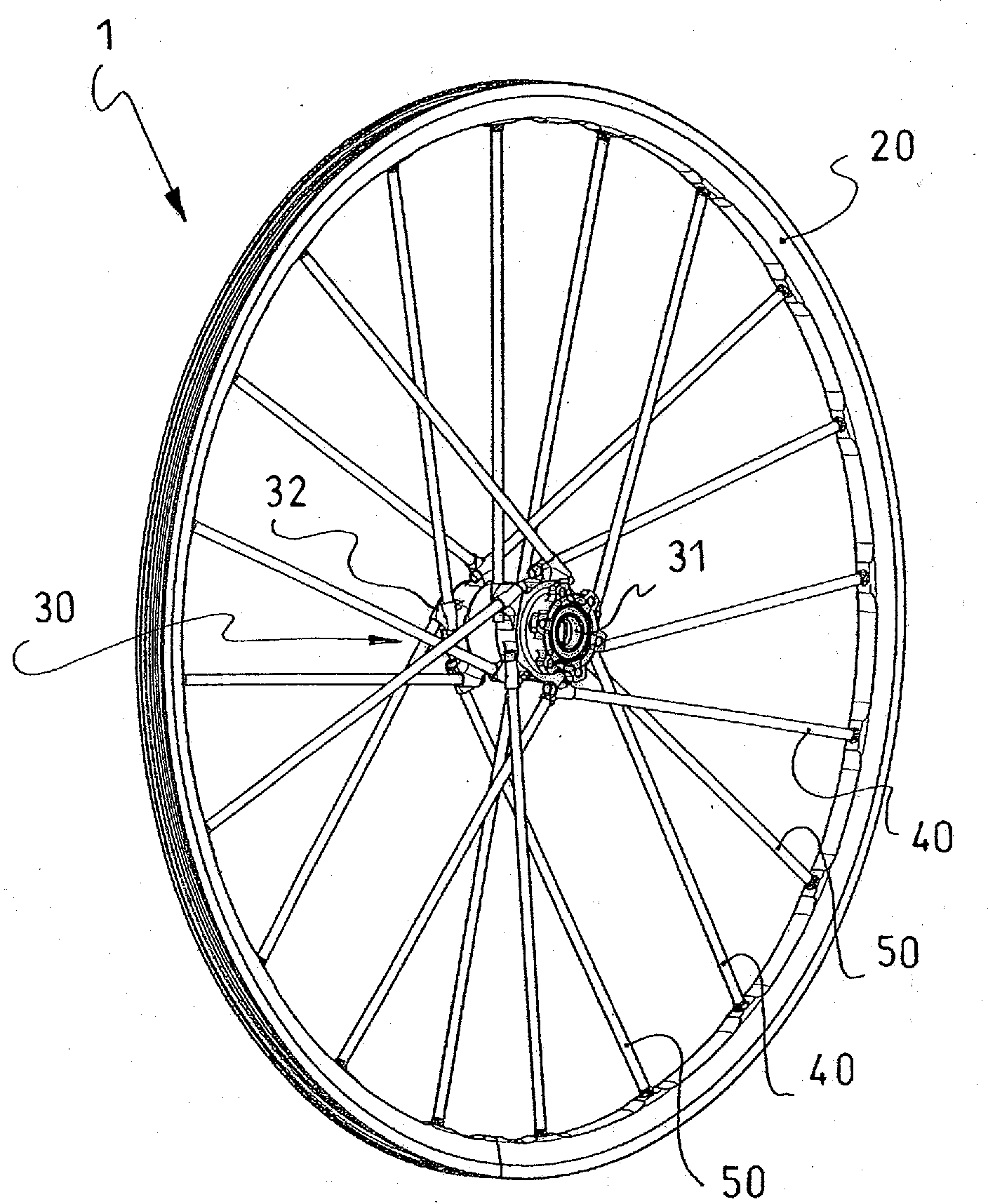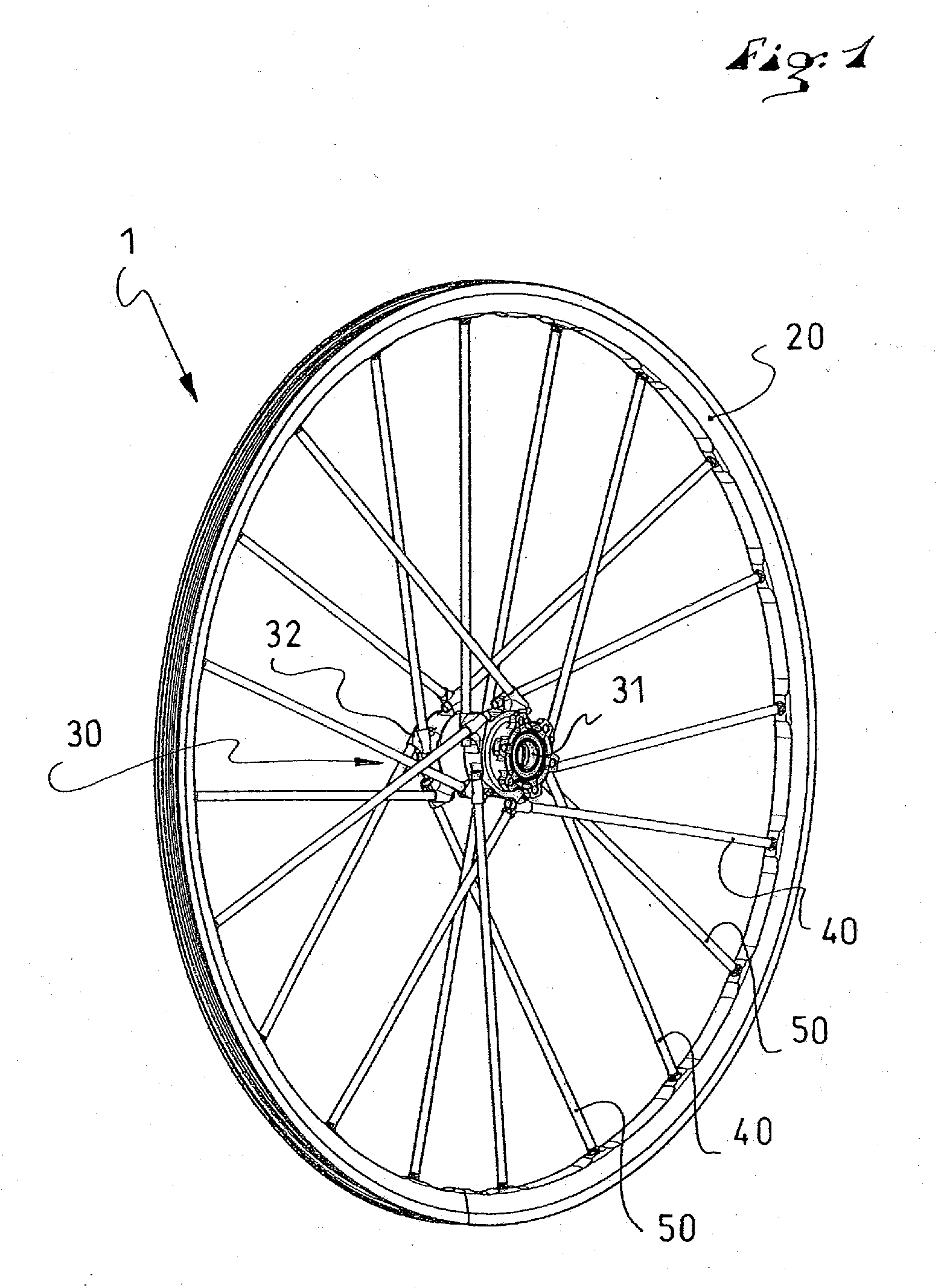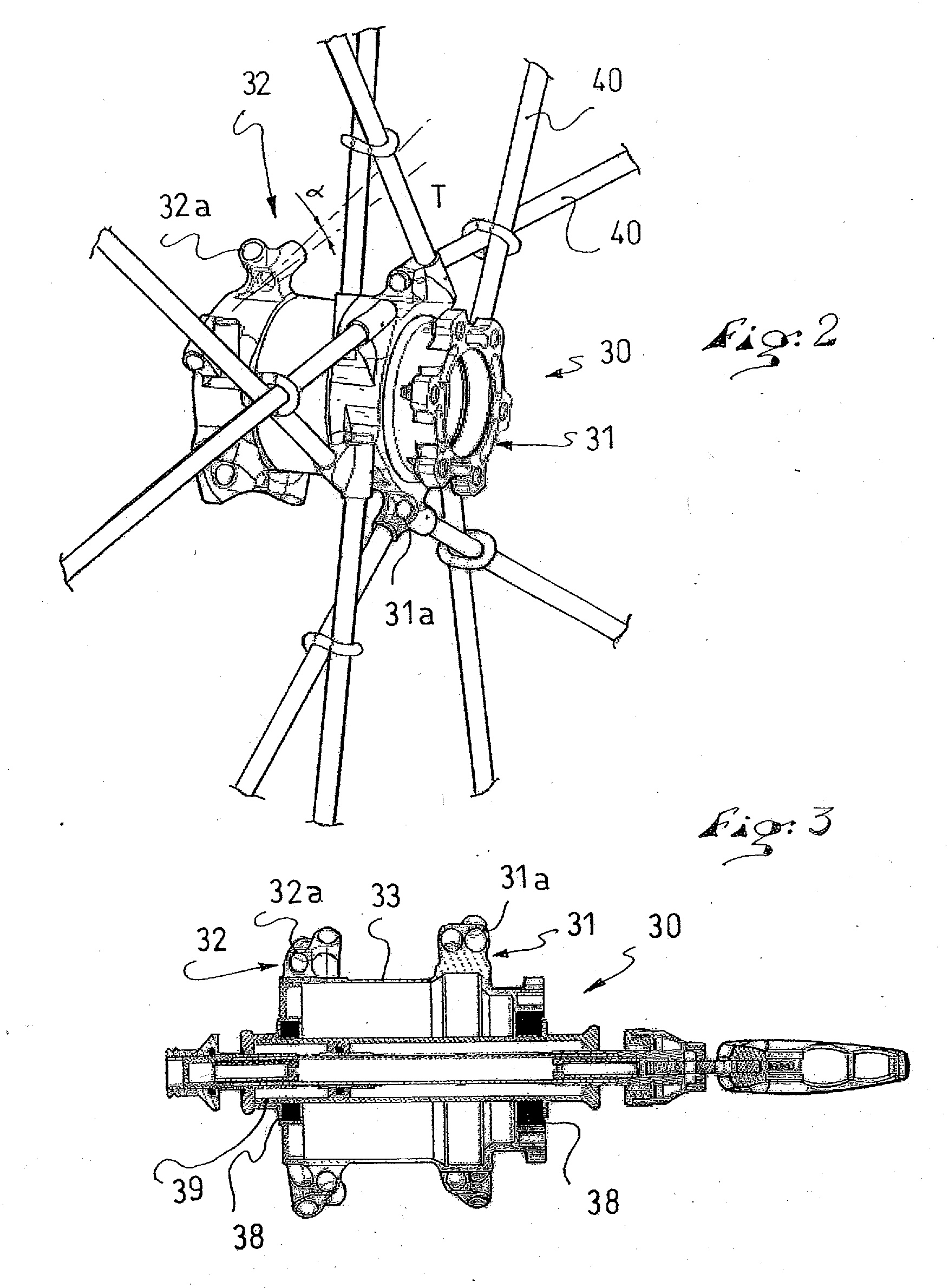Spoke wheel
a technology of compression spokes and spokes, which is applied in the direction of spoked wheels, mechanical equipment, transportation and packaging, etc., can solve the problems of reducing the perimeter of the rim by up to 2 inches, allowing the use of a greater number of compression spokes, and reducing the lateral rigidity of almost constant, so as to increase the (buckling) strength, the lateral rigidity is almost constant, and the outer diameter is greater
- Summary
- Abstract
- Description
- Claims
- Application Information
AI Technical Summary
Benefits of technology
Problems solved by technology
Method used
Image
Examples
Embodiment Construction
[0045]The wheel 1 according to the invention, shown in FIG. 1, conventionally includes a peripheral rim 20, a central hub 30, and connecting spokes 40, 50 extending between the rim 20 and the hub 30. The spokes 40, 50 are distributed in two sets, each set of spokes 40, 50 being attached to one end 31, 32, respectively, of the hub 30, and extending from the end 31, 32, respectively, from the hub towards the rim 20. The spokes 40, 50, respectively, are attached alternatively to the rim and are distributed evenly along the periphery thereof. They can also be distributed, as known, on the various sets in predetermined groups on the tension spoke wheels, as described, for example, in U.S. Pat. No. 6,145,938.
[0046]Each set of spokes 40, 50 comprises ten in number, or a total of twenty, which is a much greater number than the number of compression spokes in a so-called compression spoke wheel, having a maximum of six compression spokes, and a smaller number than the usual number of spokes ...
PUM
| Property | Measurement | Unit |
|---|---|---|
| inner diameter | aaaaa | aaaaa |
| inner diameter | aaaaa | aaaaa |
| compressive force | aaaaa | aaaaa |
Abstract
Description
Claims
Application Information
 Login to View More
Login to View More - R&D
- Intellectual Property
- Life Sciences
- Materials
- Tech Scout
- Unparalleled Data Quality
- Higher Quality Content
- 60% Fewer Hallucinations
Browse by: Latest US Patents, China's latest patents, Technical Efficacy Thesaurus, Application Domain, Technology Topic, Popular Technical Reports.
© 2025 PatSnap. All rights reserved.Legal|Privacy policy|Modern Slavery Act Transparency Statement|Sitemap|About US| Contact US: help@patsnap.com



